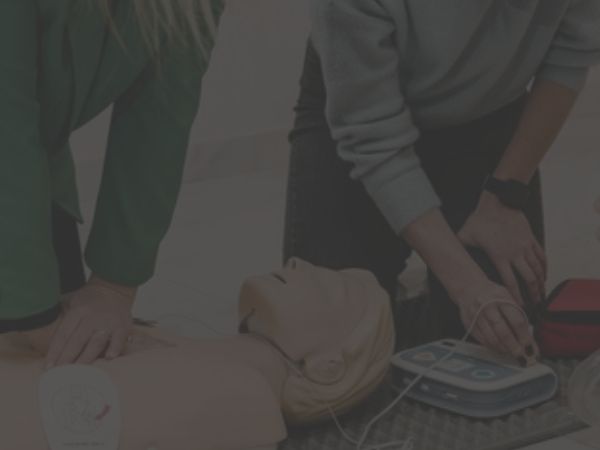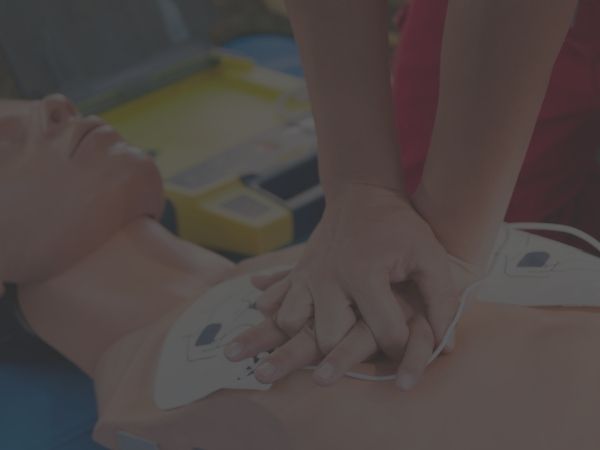Your cart is currently empty!
9 Best Workouts to Combat Heart Disease
Heart disease is a slow and silent killer, doing its deed long before you arrive in a doctor’s office and learn you have high blood pressure, metabolic disorder, or a partially clogged artery.
This snail’s pace progression can catch you off-guard if you’re not aware of the ways healthy lifestyle practices like exercising can both significantly reduce your risk of developing heart diseases and combat heart disease’s effects after it’s diagnosed.
With the knowledge that prevention and management through a healthy lifestyle are always preferable to having to take medication for a lifetime or ending up needing CPR and basic life support when that heart gives out, here are nine of the best workouts you can do now to reduce your risk factors and reclaim your heart health.
Heart disease is a broad term that describes any combination of several cardiovascular conditions, like:
- Congenital heart disorders (some people are born with heart differences that can cause health problems)
- Unhealthy blood vessels, such as coronary artery disease
- Heart rhythm issues (arrhythmias)
- Heart valve diseases
- Heart muscle diseases
- Infection of the heart, usually by staph or strep getting into the bloodstream
As you can see, not every form of heart disease is directly related to lifestyle factors. However, under the supervision of a doctor, you can combat the effects of most heart diseases with workouts long before basic life support is needed.
Signs can vary depending on the type but may include:
- Abnormal heart rhythms
- Shortness of breath
- Chest pain, tightness, or pressure
- Pain, usually in the neck, upper abdomen, or throat
- Numbness or coldness in your extremities
- Extreme fatigue, dizziness, or fainting
- High blood pressure
What Heart Disease Does to the Body
Heart disease can lead to many life- and quality-of-life related complications, including:
- Heart failure – Inability of the heart to pump adequate blood
- Heart attack – Blocked blood vessels leading to the heart
- Stroke – Blocked brain artery
- Aneurysm – a bulging blood vessel, which may burst
- Peripheral artery disease – lack of circulation in the extremities, usually the legs, leading to further vessel and tissue damage
- Cardiac arrest – sudden loss of heart function, consciousness, and breathing
In many of these cases, if CPR and basic life support are not initiated immediately, the individual will die and/or suffer quality-of-life-altering damage.
Risk factors / Lifestyle factors
According to MayoClinic.org, “physical inactivity” is a risk factor for developing heart disease. People who do not regularly activate their bodies in the way exercise does are more likely than regular exercisers to develop heart problems
But no health solution ever works in a vacuum. Other risk factors include lifestyle factors like:
- Smoking
- Poor diet
- Developing a metabolic disorder
- High blood pressure
- Developing obesity
- Poorly managed stress
- Not getting enough sleep
Many of these are interdependent on each other, further worsening the risk. For example, poor diet and lack of exercise can lead to metabolic disorders like type 2 diabetes, which in turn can increase the risk of developing cardiovascular disease. So if you have one of these conditions, you’re likely to have several.
How Exercise Combats Heart Disease
 Exercise addresses cardiovascular disease by addressing contributing factors like metabolic syndrome, lethargy, insomnia, trouble managing emotional stress, and difficulty managing weight. Also, often people who exercise regularly find they’re more motivated to make other healthy changes. So starting a new workout routine can have a positive cascade effect on your health.
Exercise addresses cardiovascular disease by addressing contributing factors like metabolic syndrome, lethargy, insomnia, trouble managing emotional stress, and difficulty managing weight. Also, often people who exercise regularly find they’re more motivated to make other healthy changes. So starting a new workout routine can have a positive cascade effect on your health.
According to NIH.gov, several long-term studies have shown that getting enough exercise is associated with:
- Lower mortality rates from all causes
- Longer life expectancy
- Significant decline in the chances of someone developing heart or respiratory disorders
In fact, the chance a person will die is inversely proportional to their cardiorespiratory fitness level, even when studies do not remove confounding factors like smoking or high blood pressure.
So if you change this one thing (working out for heart health), you can significantly improve your health and quality of life regardless of where you are currently health-wise.
Best Workouts for Heart Disease
When it comes to cardiovascular disease, of course, cardio often comes to mind because it strengthens your heart and lungs. But you don’t have to huff and puff to benefit the heart and blood vessels.
According to CDC.gov, frequency and duration can make up for less intensity. 150 minutes of moderate activity (a brisk walk, yoga, water aerobics) is roughly the equivalent of 75 of intense activity (running, burpees).
So, if you’re new to exercise or struggle with intense exercise because your heart disease is already impacting your health, know that starting a low-intensity exercise that you do regularly can impact your blood pressure, heart strength, blood sugar, vascular health, and other cardiovascular system factors positively and noticeably.
MedlinePlus.gov recommends you always talk to your doctor about a new exercise program, especially if you have or have a history of:
- Heart Attack
- Diabetes
- Chest tightness
- Shortness of breath
- Recent heart procedure
Your doctor may provide you with some precautions like pacing yourself, knowing your limits, or only working out with a trainer or family member who has CPR training.
But regardless of special requirements, they’re likely to be on board with this move toward a healthier lifestyle.
1. Gentle Walking (Casual Stroll Pace)
For those who are able, the power of walking cannot be denied. It’s easy for almost anyone to do.
The less cardiovascular fitness a person currently has, the better gentle walking is for your heart. That’s because you can get your heart rate up to cardio levels (>120-140 beats a minute) with gentler exercise.
This makes gentle walking perfect for people who are already suffering from more advanced heart disease symptoms.
Try to work your way up to 30 minutes a day on a level track, treadmill, or sidewalk. If 30 minutes is too much at one time, break it up into 10 minutes three times a day. Try to do this for at least five days a week.
And as you feel your heart and lungs getting stronger, don’t be afraid to pick up the pace and duration. This leads us to number two.
2. Brisk Walking
Once you feel comfortable doing so, picking up the pace will deliver even more benefits. If you’re wondering if you’re ready to walk more briskly, try alternating brisk walking with more casual walking.
The fact that you can walk briskly for more than a few minutes is a sign your heart health is improving. Be motivated and continue to explore more heart-strengthening workouts.
3. Hiking Hills or Stairs
If you live in a hilly part of the country, you might find hills in your neighborhood. Or you can find some stairs to climb in your office building, home, or government building. You’ve likely noticed that it’s harder to walk upstairs than it is to walk on a flat surface.
That’s because you’re activating extra leg, hip, and ankle muscles when you do. This means you’re strengthening your leg muscles. But at the same time, your heart has to work harder, so it’s getting stronger too.
If you have a gym membership, many modern treadmills have an incline function to simulate hills. Or you may find a stair-climbing machine to mimic this activity.
4. Weight Training
Weight training increases your lean body mass (primarily muscle). People with more muscle burn more fat than people who have weaker muscles. So weight training may help your heart in two primary ways. One, it’s getting you moving. Two, it cuts down on the excess body fat that makes the heart work harder.
Weight training in any form can help, so don’t miss out just because you don’t have a gym membership.
Resistance bands or using household items like tin cans and water bottles are an affordable way to add some “weight” to activities and build muscle.
You can even use your body weight by doing squats, lunges, and pushups if you choose.
5. Swimming
 Do you like swimming, doing water aerobics in the pool, or just walking back and forth through waist-deep water?
Do you like swimming, doing water aerobics in the pool, or just walking back and forth through waist-deep water?
As long as you’re moving, water workouts can work wonders for your heart. They take some of the pressure off your knees while providing water resistance that makes the bodywork harder to perform a movement.
Any time your body is pushed a little harder, the heart gets a little stronger.
6. Yoga
You don’t have to stand on your head to do yoga. You’ll find many kinds of yoga for different fitness levels. Yoga can improve balance, flexibility, strength, and reduce stress. Chronic stress damages the heart and can increase blood pressure, so anything that helps the body manage stress is great for heart health.
A systematic review of studies that included a total of 3000+ participants found that regular yoga reduced diastolic blood pressure (the bottom number) by five points and systolic pressure by 3 points,
Moderate exercises like yoga are ideal for managing stress because they activate hormones that help the mind manage stress without activating cortisol, the stress hormone that vigorous exercise activates.
According to a study published at NIH.gov, vigorous exercise can increase the circulating cortisol hormone by as much as 83.1%.
Excess cortisol is problematic for several reasons. It can increase blood pressure, put extra strain on blood vessels, and even cause you to hold onto body fat–all bad for your heart.
7. Cycling
Whether you prefer to ride around the neighborhood or get on a stationary bike, cycling can get your blood pumping while reducing strain on your joints. As the ride gets easier, add some resistance to improve heart health further.
If you live close enough to work, map out the route to see if it’s bikeable. Anytime you can add an active activity to something that’s already a habit, like commuting to work, you increase your chances of turning that into a healthy lifestyle habit.
This is called “habit stacking”, one of many tips best-selling author James Clear recommends in his healthy habit developing book Atomic Habits.
8. Tai Chi
Tai Chi involves slow, smooth, meditative movements. It works out the whole body and has similar benefits to yoga.
9. Dance
If you’re looking for a healthy lifestyle activity that’s more intense, consider taking a beginner’s dance class or joining a Zumba group. Dance is a social activity, so you can build a support group that motivates each other to make healthy lifestyle changes.
With this heart-pumping activity, you forget you’re working out because it’s so much fun learning the moves and dancing to music.
You may need to work up to longer sessions, but the endorphins dancing produces make it easier to power through a longer dance workout than you might think possible right now.
Staying Motivated to Improve Cardiovascular Disease
You want to improve your heart health but struggle to stay motivated. We have some tips for you.
Set Some Goals
To stay motivated, your brain needs to be working toward something. Whether you want to lower your blood pressure or be able to get off diabetes medication with your doctor’s help, write these goals down and then create a plan to achieve them.
Have Fun
Exercise naturally releases fun and happiness hormones called endorphins. But if you go into it expecting to be miserable, that becomes a self-fulfilling prophecy. Plan to have fun and keep a positive mindset.
Have a Two Minute Rule
This is another Atomic Habit trick to develop healthy habits. Don’t tell yourself I’m going to work out for 30 minutes a day. Instead, commit to doing two minutes of physical activity a day. If you want to stop after two minutes, let yourself. But more times than not, once you put in two minutes of physical activity, you’ll have the motivation to do some more, reduce your heart disease risk factors and live a healthy lifestyle.
Did we fail to include your favorite heart health workout? Share it with us on social media.










Leave a Reply